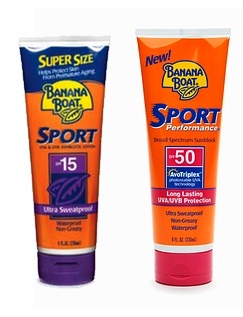
Have you ever visited a tanning salon to get a “base tan” before your beach vacation? If so, you’ve fallen victim to one of the most prevalent myths about skin cancer: that tanning before sun exposure prevents skin from burning. This common misconception, along with a host of other myths about skin cancer, could have deadly results: Rates of melanoma–the most dangerous type of skin cancer–are rising, particularly among young women.
We asked Dr. Howard Brooks of Georgetown Skin to debunk some of the most common myths about tanning and skin cancer.
MYTH: SPF 45 sunscreen is three times as powerful as SPF 15.
TRUTH: In theory, SPF 45 offers sun protection for three times as long as SPF 15, but in practice, the effectiveness of the sunscreen depends on how it’s applied, says Dr. Brooks. The higher the sun protection factor (SPF) of a sunscreen, the more it will protect against UVB rays, which are the shortwave ultraviolet rays responsible for most skin reddening and sunburn. The SPF number roughly indicates how long after application you can remain in the sun without burning. For example, with the correct application of SPF 15, a person who would normally burn in 10 minutes would only burn after 150 minutes. In theory, SPF 45 would allow that same person 450 minutes of sun exposure before burning. However if you use too little or do not reapply frequently enough, you won’t be protected.
MYTH: Getting a “base tan” helps prevent sunburn.
TRUTH: Tanning in the hopes of staving off a burn is not only ineffective, says Dr. Brooks, it’s also dangerous. “Once a tan develops, you have already damaged your skin,” he says. Instead, apply sunscreen with sufficient SPF protection half an hour before going out into the sun, and reapply every two hours.
MYTH: Men and women are at equal risk for developing skin cancer.
TRUTH: Men are more likely than women to develop skin cancer, but both sexes are at risk. Melanoma is the fifth most common cancer in men and the seventh most common in women. The higher prevalence in men may be influenced by the fact that men spend more time in the sun, tend to use less sunscreen, and lose their hair more than women, leaving more skin exposed to the sun, explains Dr. Brooks. Still, melanoma rates for young women are on the rise, due in part to their high use of tanning beds.
MYTH: Tanning indoors is safer than tanning outdoors and can help prevent and treat seasonal depression.
TRUTH: In fact, tanning indoors is much more dangerous than being exposed to natural sunlight, says Dr. Brooks. He notes that tanning beds are not regulated by the FDA, and the American Academy of Dermatology now classifies tanning beds as known carcinogens. As to the claim that indoor tanning is a good mood booster, Dr. Brooks notes that although many people suffer from seasonal affective disorder, a syndrome in which people tend to feel depressed during the winter or summer months, he would not recommend indoor tanning as a treatment option. You’re better off investing in a mood-enhancing light therapy lamp, instead.
MYTH: People with dark skin don’t need to worry about skin cancer.
TRUTH: People with dark skin are at risk for skin cancer, too. Dr. Brooks notes that the first skin cancer patient he treated in private practice was a 40-year-old African-American woman. He stresses that it’s important for everyone to use a sunscreen with at least SPF 15 that also protects against both UVB (shortwave) and UVA rays, which are the more prevalent long-wave rays that often result in skin aging and wrinkling.
So next time you feel the need to be bronzed, look into sunless tanning options, instead. Most important, before venturing outside, remember to invest in a UVA/UVB sunscreen with an SPF of at least 15 and reapply, reapply, reapply.


















